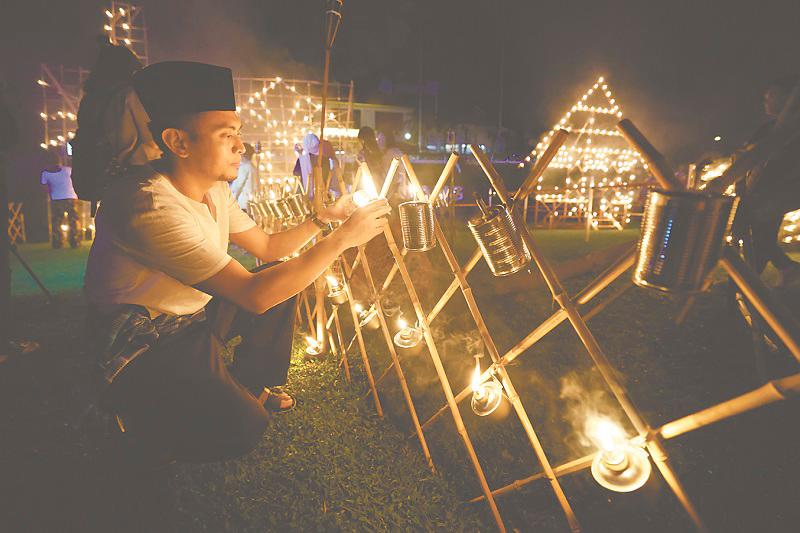ONCE Chinese New Year had passed, I found myself glancing at my calendar and realised that the fasting month, Ramadan, was fast approaching on March 2.
This reminded me of a tradition I uphold every year: giving a box of dates to all my Muslim colleagues at the Faculty of Hospitality and Tourism, Berjaya University College.
Dates are a staple during Ramadan and I made sure to buy a box for them, wishing them a blessed and fulfilling fasting month. Upon receiving the dates, they expressed their appreciation, though I could see a hint of exhaustion in their eyes from the long hours of fasting.
Nonetheless, there was a sense of contentment as fasting during this holy month brings a deep sense of spiritual connection and purpose.
During Ramadan, I took part in the Berjaya University and Berjaya TVET College photography competition, which ran from March 1 to 30. The theme of the competition was to capture the spirit of Ramadan and Hari Raya, showcasing the beauty and vibrancy of Malaysia’s urban landscape.
I decided to focus on the Ramadan landscape, particularly the traditional pelita panjut. Having always been fascinated by the sight of pelita decorations in shopping malls, I did some research to learn more about this tradition, only to discover that it is slowly fading in the modern era.
The pelita panjut, also known as the traditional bamboo lamp, has deep cultural significance, particularly in rural Malaysia.
In the past, these lamps were lit during the seven-night festival at the end of Ramadan to illuminate the way for villagers who were going to the mosque for tahajjud (the midnight prayers) during the last 10 nights of Ramadan. At that time, there were few sources of light and the flickering flame of the panjut served as a beacon of hope and spiritual guidance.
It is a common misconception that pelita panjut is linked to the Laylat al-Qadr (“The Night of Power”).
In the present day, the practice of lighting the pelita is not as widespread as it once was. Modern technologies have introduced plastic lamps and colourful LED lights but there are still a few communities that honour the original tradition.
Efforts to preserve the pelita panjut tradition are evident through annual competitions and events, which bring together the community to celebrate and showcase these beautiful, handcrafted lamps.
Historically, as dusk approached on the night of Hari Raya Aidilfitri, Malaysian villages would come alive with the warm glow of pelita panjut, lining the streets and decorating homes.
These lamps, often made from bamboo and filled with kerosene or diesel, produced a steady flame that illuminated the night. Their intricate designs featured traditional Malay patterns, many of which held deep cultural meanings, symbolising prosperity, unity and the spirit of Eid.
The pelita is not just a simple lamp. It is a symbol of art, faith and community spirit. The wicks are soaked in kerosene, allowing the lamps to burn brightly throughout the night while the designs often reflect the identity of the community, with some taking the form of national landmarks, religious symbols or symbolic Malay motifs.
The preparation of the pelita panjut also promotes a sense of unity and cooperation. Weeks before Hari Raya, the villagers would gather to carve and arrange the bamboo poles.
The men would handle the carving while the women and children joined in to decorate and hang the lamps. This collective effort not only brought the community together but also strengthened the bonds among family members and neighbours.
However, as the years passed, this once-vibrant tradition has seen a decline. Younger generations, particularly those living in urban areas, have become accustomed to modern LED lights and decorations that twinkle, and they rarely participate in the gotong-royong activities that were once a central part of Ramadan preparations.
The elderly in the villages are now the only ones upholding these customs as the younger generation are often too busy to return to their villages in time to take part in this cherished tradition.
For those who grew up in the village, the Pelita Panjut evokes nostalgia and fond memories. The warm, flickering light of the lamps not only illuminated the streets but also the hearts of relatives returning home to celebrate Aidilfitri.
Some recall running around the streets under the pelita or sitting together with loved ones, enjoying the delicious Aidilfitri food while gazing at the flickering lights.
As technology continues to advance at a rapid pace, the pelita panjut may seem outdated to some. Modern decorations, with their bright LED lights, are certainly more convenient and energy-efficient but they lack the cultural depth and sense of community that the pelita represents.
The pelita panjut is more than just a decoration; it is a cultural heritage, a symbol of simplicity, creativity and togetherness that should be preserved for future generations.
The question that remains is whether the pelita will continue to shine brightly in the future. With the rising cost of materials and the decreasing participation of the younger generation, this beautiful tradition may one day fade into obscurity.
It is up to us to decide whether we want to keep this tradition alive and pass it down to future generations, ensuring that the pelita panjut continues to shine as a beacon of unity and cultural pride.
As a Malaysian, the Hari Raya Aidilfitri festival serves as a reminder of the diverse and multiracial fabric of our nation. It is a time to reflect on the beauty of living in a country where different cultures, religions and traditions coexist harmoniously.
We are fortunate to experience the richness of these celebrations throughout the year and to share in the joy and blessings of festivals, regardless of race or background.
The pelita panjut is just one of the many symbols of unity and togetherness that make our country so special.
Dr Chris Ong Siew Har is the dean of the Faculty of Hospitality and
Tourism, Berjaya University College. Comments:









